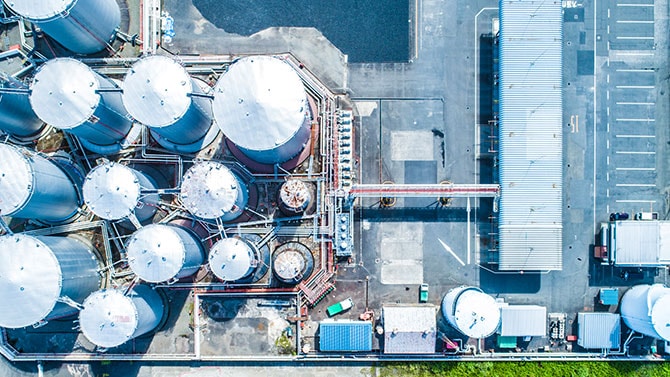
Improving cost management through the energy crisis
The interdependence of global energy markets is causing disruption for companies in many sectors. As the ongoing Russian invasion of Ukraine impacts oil and gas markets, triggering extreme price volatility and commodity cost inflation, companies are faced with tough choices precisely at a time when they are striving to decarbonise operations and implement an ESG transformation. Pressure on balance sheets is also increasing—especially for heavy energy users—alongside rising interest rates and higher costs of capital. At a minimum, companies will need to manage the working capital impact of volatile prices; at worst, they may struggle for survival if they cannot cut energy usage or absorb higher prices.
Spotlight on the European market
Governments in Europe may need to step in to protect consumers in late 2022, as a range of factors continue to affect its energy market:
Increasing proliferation of gas supply disruption
Ongoing financial distress for retail suppliers in energy
Rising concern about a gas crunch
Higher cost of living for consumers
- Rising fuel poverty
Who is hit hardest?

Industrial
Market context
- Demand destruction: Higher costs in energy-intensive industries lead to lower utilisation or closures.
- Governments might intervene in winter to reduce industrial demand.
- Future uncertainty creates an incentive to lock-in energy costs in contracts now.
Downside risks
- Closures of noncritical energy-intensive industries are much more likely.
- Governments may close or curtail non-essential industries.
- An inability to hedge against energy price movements increases risk exposure.
- A potential wave of increased financial distress would impact non-domestic or B2B energy suppliers.

Transport & Logistics
Market context
|
Downside risks
- Governments may need to manage provision, and reduce non-essential activity.

Retail & Consumer
Market context
- Consumer disposable income is further reduced, due to rising domestic fuel and transport fuel costs.
- Risk of recession increases.
- Government under increasing pressure to provide support to the vulnerable.
Downside risks
- Without government intervention, an energy crisis could have knock-on effects in the economy, reducing product availability and raising prices.
How can you create value amid disruption? Use a value bridge.
For companies surrounded by economic uncertainty mixed with a competitive surge of deals worldwide, creating value is a real challenge. A value bridge can be used to identify actions that can prevent value loss and preserve value in times of disruption, while also strengthening your company's competitive positioning to help it come out ahead.
Value levers
Enterprise value
Value Creation
Full potential value
How can companies respond to preserve value
Cash flow
Understand the impact of sustained higher energy costs on your next 18- to 24-month cash flow. Identify the levers that can mitigate the impact across your organisation and determine how you can activate them.
Operational improvements
Review the impact of operational improvements on business plan performance and assess the potential for cost reduction in other areas. Check your energy contracts and test your exposure to price increases under different hedging and price scenarios. Examine your supplier relationships and test the resilience of both supply chain and their ability to pass energy price increases through to end-customers.
Pricing
Review your customer commitments, your contractual position, and your ability to manage supply or pass price increases through to end-consumers.
ESG transition strategy
Reduce your energy demand and reassess opportunities to improve energy efficiency, including using energy-efficient equipment, staggering work hours, applying demand analytics, and educating employees on energy efficiency.
Long-term replacements
Improve your energy supply resilience by sourcing alternative supply or on-site low-carbon generation, such as rooftop solar. Consider electrifying your fleet.
Supply chain de-risking
Make sure that your critical suppliers of energy, fuel and other services are resilient.
Contact us


Isabelle Gross
Partner, UK Energy and Utilities Restructuring Lead, PwC United Kingdom
Tel: +44 (0)7802 659267























